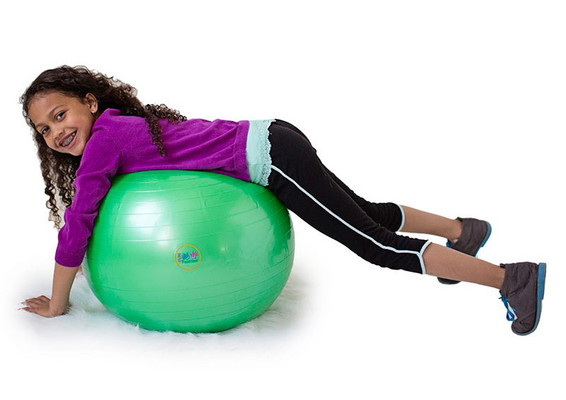3 exercise ball moves to build upper body strength
As a physical education teacher, you know one of the keys to a successful class is keeping all of your students involved. However, space and equipment limitations make that a major challenge when implementing strength training programs. Sharing just a few machines and resistance bands among a full class of students is not only an inefficient use of students' time, but all that waiting can stymie their enthusiasm. To develop a program that engages everyone, try expanding your scope and making use of other types of equipment, such as exercise balls.
Exercise balls, also known as yoga balls or stability balls, are both easy and safe to use, and can be used in any open space, making them a perfect fit for physical education strength training programs. Here are a few exercises you can teach that will help your students develop both balance and coordination and build their upper body strength:
- Balance push-ups: While similar in motion to a traditional body weight push-up, adding a wobbly exercise ball further activates the core. To get into position, have students lie face down on the ball with their hands and feet touching the floor, then walk out until their shins are resting on the ball and their torsos are flat. Then, have them lower their torsos toward the ground until their upper arms are parallel to the ground. Return to the original position, and repeat.
- Standing plank: Students should start with their elbows and forearms on the ball, with one one leg extended behind for balance. Then, have them step the other leg back so their feet are together. Students should hold this pose for as long as possible, for up to 30 seconds per set.
- Back extensions: To start, students should rest their stomachs and hips on the ball, with their legs extended straight behind them, holding onto the ball for balance. Then, have them raise their chests high, bringing their hands to the backs of their heads, and hold for 1-2 seconds before returning to the starting position.
Recent Posts
-
The Power of Not Giving Up: Why Perseverance Changes Everything
There’s something undeniably powerful about a person who refuses to give up. In a world t …May 15th 2025 -
How to Choose a Basketball: The Ultimate Guide for Every Player
Choosing the right basketball might seem simple, but it can significantly impact your game. Whether …Apr 23rd 2025 -
How to Choose a Soccer Ball
Choosing the right soccer ball is essential for coaches and players of all skill levels, from casua …Jun 11th 2023




